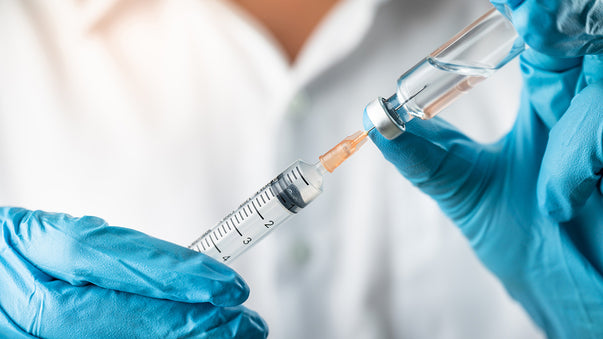How to Reduce Negative Effects of Social Media

Psychologists at University of British Columbia have analyzed how people use three major social platforms: Facebook, Twitter, and Instagram. And they analyzed how that use can impact a person's overall well-being.
A study is published in Journal of Happiness Studies. It argues that, while most people gain happiness from interacting with others face-to-face, some come away from using social media with a feeling of negativity, for a variety of different reasons. For example, many social media users report that the more they compare themselves to others while using social media, the less happy they feel.
But the study also reveals how people can use social media positively. According to Associate Professor Derrick Wirtz, people should avoid passively scrolling and resist comparing themselves to other social media users. Instead, people should use social media "to enable direct interactions and social connectedness - for example, talking online synchronously or arranging time spent with others in-person, when possible and with proper precautions."
"If we all remember to do that, the negative impact of social media use could be reduced - and social network sites could even have the potential to improve our well-being and happiness," adds Wirtz. "In other words, we need to remember how we use social media has the potential to shape the effects on our day-to-day happiness."
Pfizer Announces Data for COVID-19 Vaccine
“Drugmaker Pfizer said Monday an early look at data from its coronavirus vaccine shows it is more than 90 percent effective - a much better than expected efficacy if the trend continues,” CNN reports.
A press release has been issued by Pfizer. It announces that the vaccine candidate BNT162b2 has demonstrated evidence of efficacy against COVID-19 in participants without prior evidence of SARS-CoV-2 infection. This is based on the first interim efficacy analysis. It was conducted on November 8, 2020 by an external independent Data Monitoring Committee (DMC) from the Phase 3 clinical study.
The case split between vaccinated individuals and those who received the placebo indicates a vaccine efficacy rate above 90 percent.
Llama Antibodies as Weapon Against COVID-19
Researchers at University of Pittsburgh have developed a new method to extract tiny but extremely powerful SARS-CoV-2 antibody fragments from llamas. A study is published in Science.
The study indicates that these special llama antibodies, called "nanobodies," are much smaller than human antibodies and many times more effective at neutralizing the SARS-CoV-2 virus. They're also much more stable.
A llama was infected with SARS-CoV-2, the virus that causes COVID-19. After two months, the animal's immune system produced mature nanobodies against the virus.
The nanobodies could be fashioned into inhalable therapeutics with the potential to prevent and treat COVID-19.
New Promising Treatment for Alzheimer's Disease
Scientists at Uppsala University have described a new treatment method for Alzheimer's disease. In this disease, a protein forms clumps in the brain and causes sufferers to lose their memory.
The new treatment is detailed in a research paper published in Theranostics. It increases the body's ability to degrade the building blocks that lead to these protein clumps.
The scientists fused somatostatin to a brain transport protein which allows the somatostatin to enter the brain. Somatostatin is known to improve the body’s ability to degrade the harmful protein clumps. This has proven very effective in laboratory mice.
“Ultrapotent” Candidate Vaccine Against COVID-19
Researchers at University of Washington have developed an “ultrapotent” nanoparticle candidate vaccine against COVID-19. The new candidate vaccine was developed using computer-based vaccine design techniques invented at University of Washington. It is described in a paper published in Cell.
The vaccine is based on a self-assembling protein nanoparticle loaded with the SARS-CoV-2 Spike protein. Many leading COVID-19 vaccine candidates are based on the soluble SARS-CoV-2 Spike protein. By way of comparison, the new nanoparticle vaccine produced ten times more neutralizing antibodies in laboratory mice, even at a six-fold lower vaccine dose.
The molecular structure of the vaccine roughly mimics that of a virus. This may account for its enhanced ability to provoke an immune response.
More Articles
Don't miss a beat! In our Pulse Newsletter, Thrivous curates the most important news on health science and human enhancement, so you can stay informed without wasting time on hype and trivia. It's part of the free Thrivous newsletter. Subscribe now to receive email about human enhancement, nootropics, and geroprotectors, as well as company news and deals.
Read more articles at Thrivous, the human enhancement company. You can browse recent articles in Thrivous Views. See other Pulse Newsletter articles. Or check out an article below.
-
The First COVID-19 Vaccines Are Coming
Last week, we reported the breaking news that the vaccine candidate BNT162b2, developed by Pfizer and BioNTech, shows evidence of efficacy ...
-
SF180 Brain Booster Supplement Scam
The dietary supplement, SF 180 Brain Pills, claims to be a proven dietary formula to boost blood circulation and increase ...


